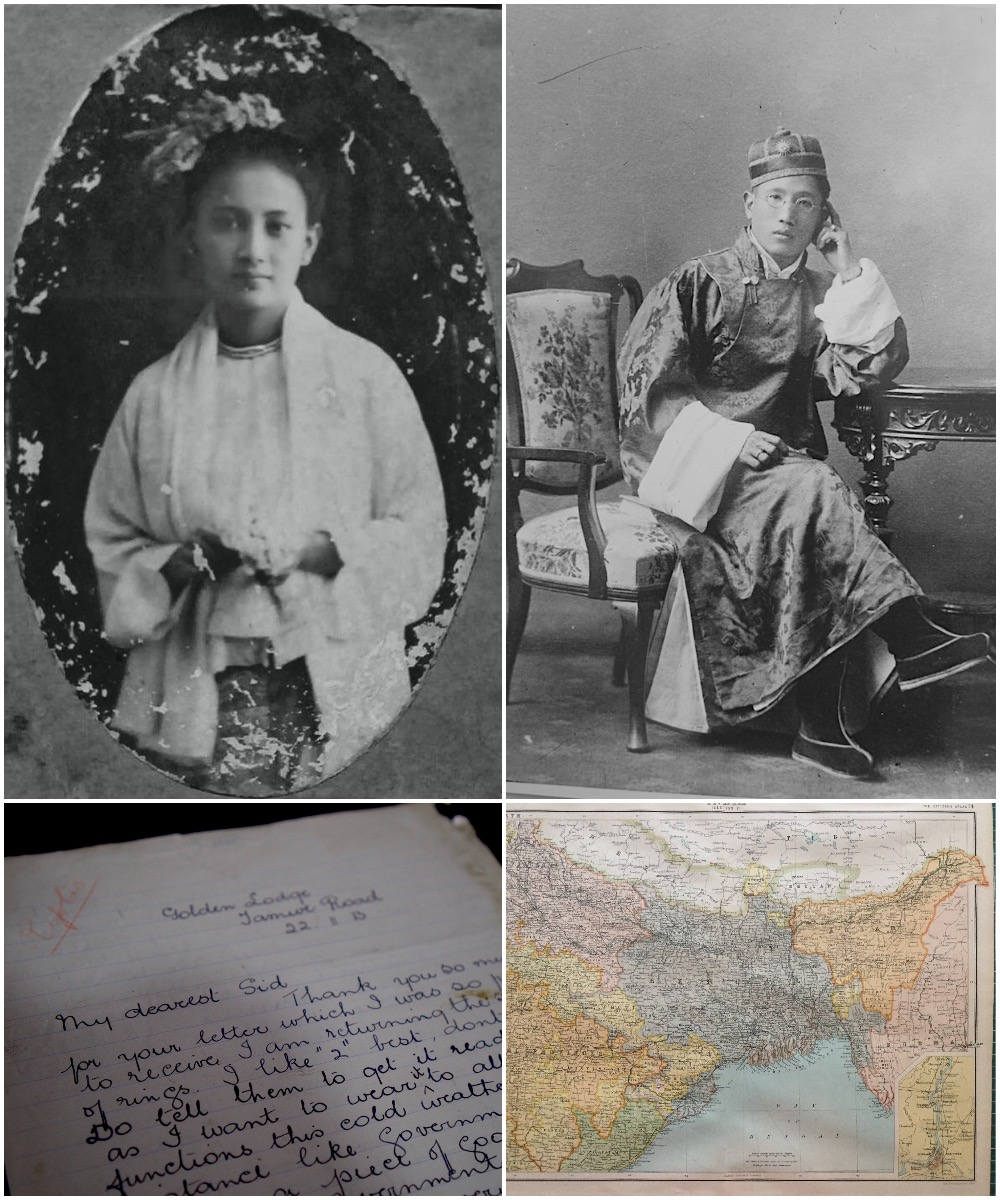
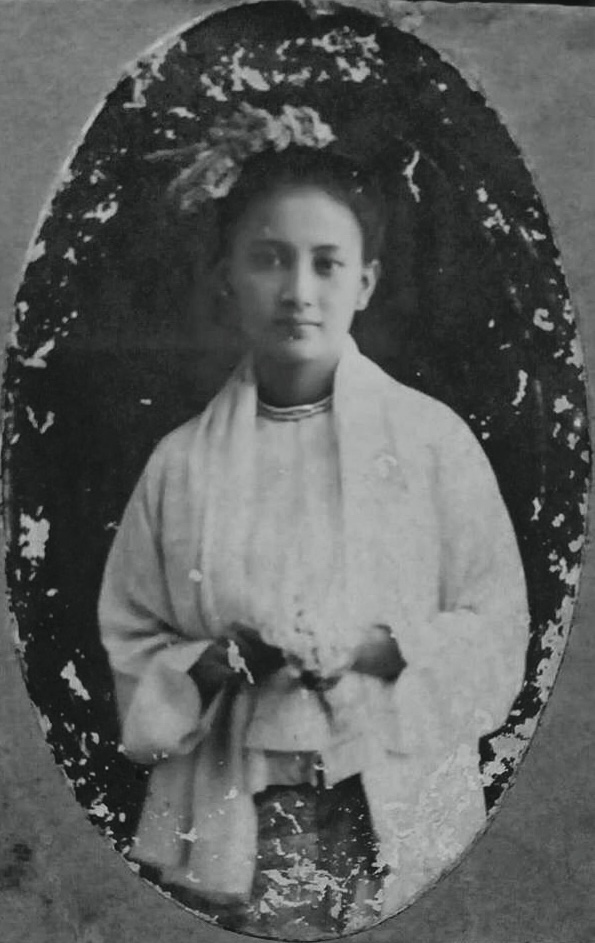
HRH Princess Hteiktin Ma Lat
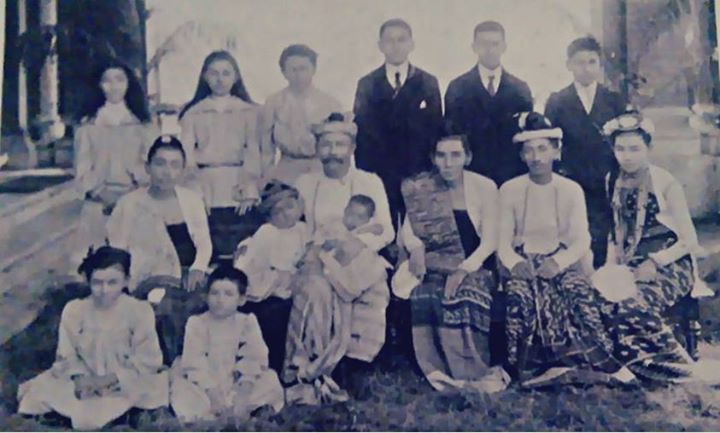
HRH the Prince of Limbin together with his family, including his daughter Princess Ma Lat, at Allahabad, India.
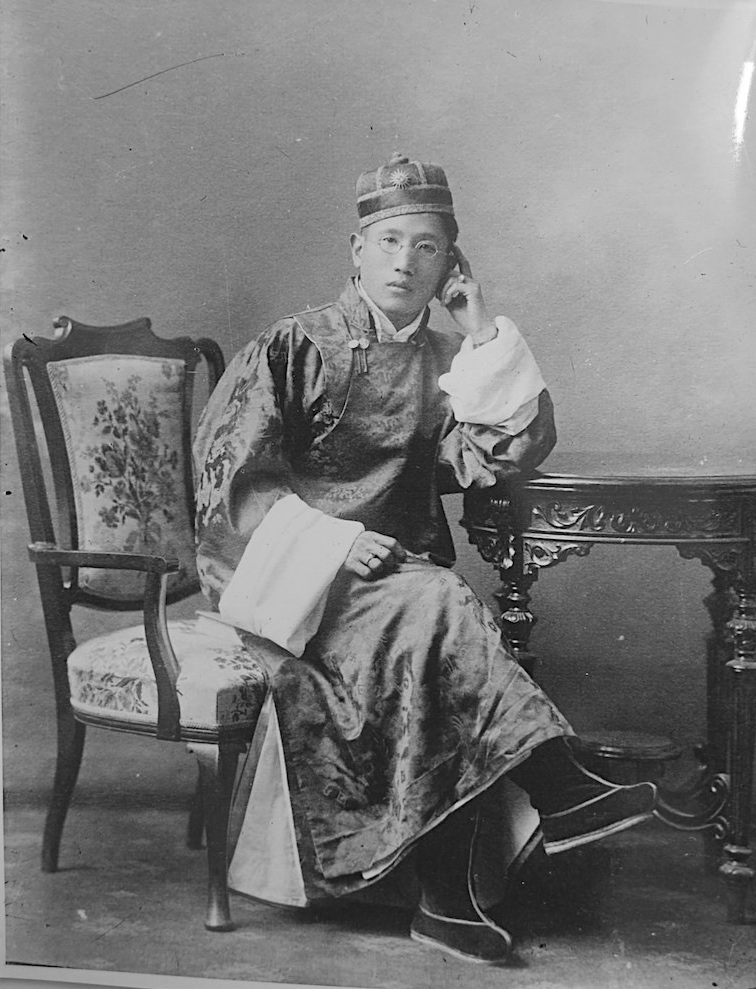
HH Sidkeong Tulku Namgyal, the Chogyal of Sikkim
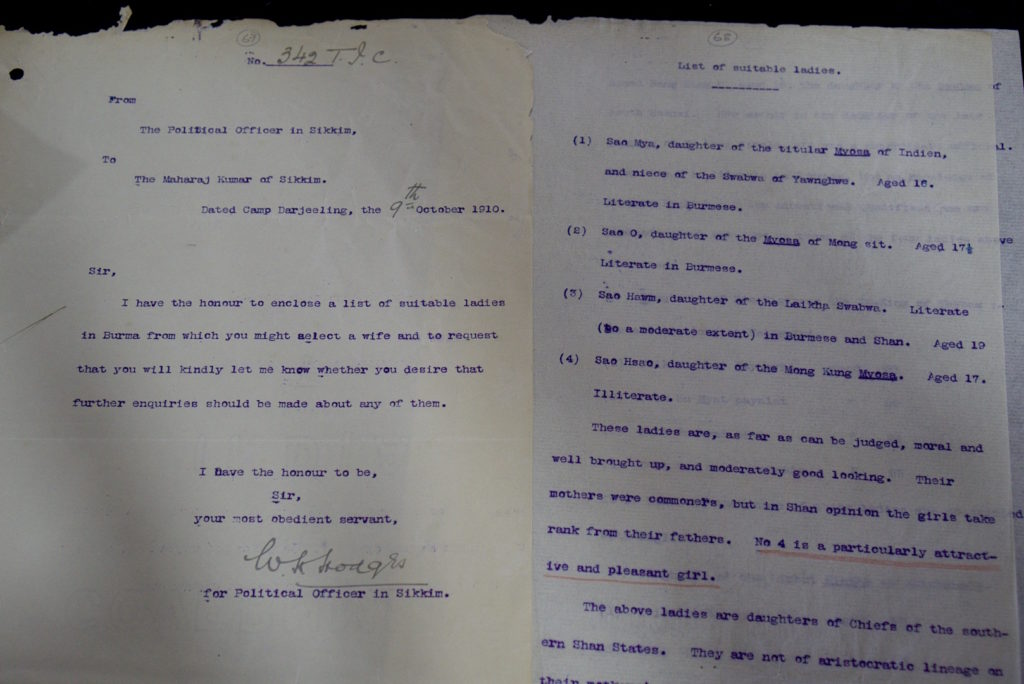
A 1910 letter from the British Political Officer in Sikkim suggesting possible Burmese brides for Prince Sidkeong
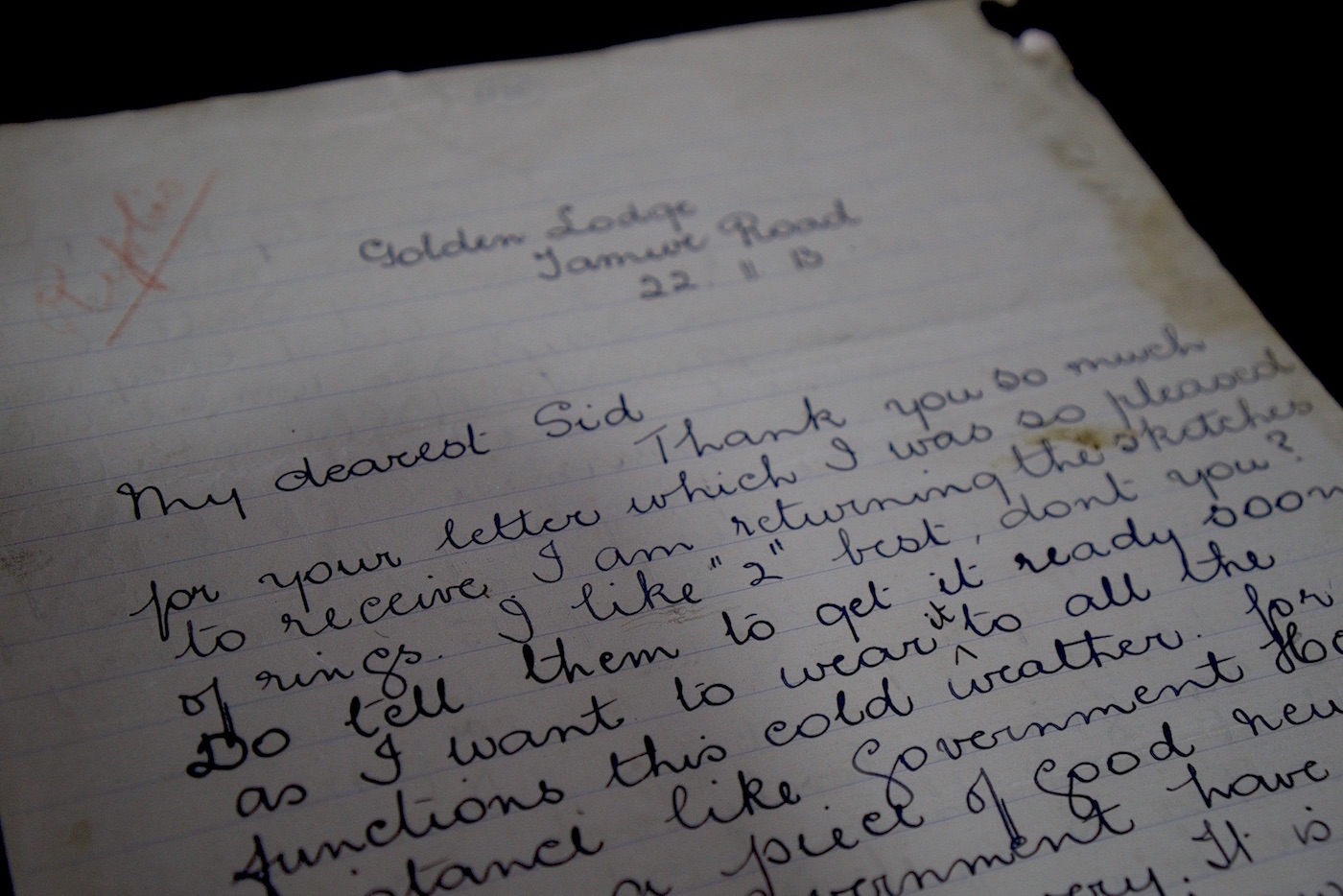
Letters from Princess Ma Lat to then Prince Sidkeong.
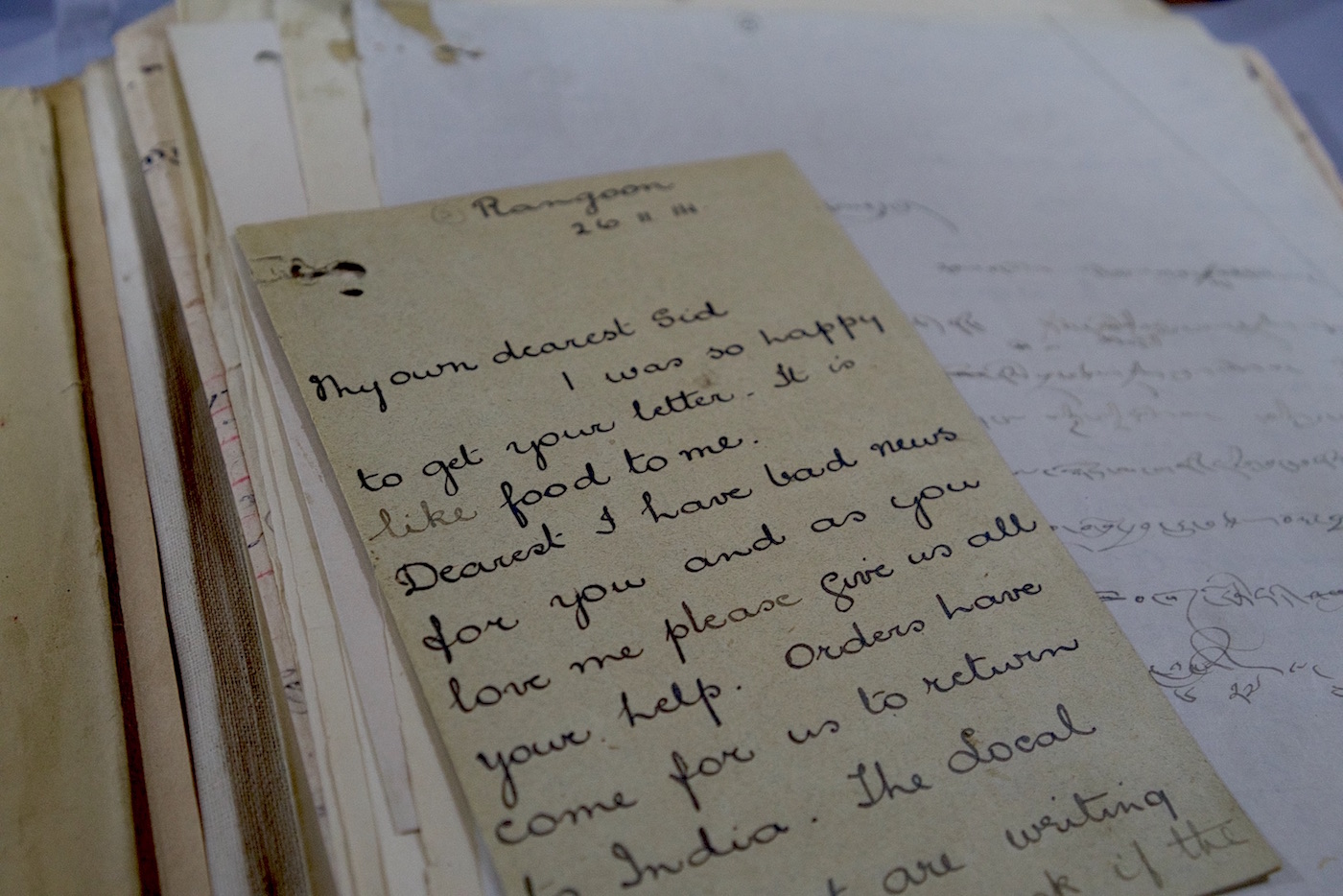
Letters from Princess Ma Lat to then Prince Sidkeong.

A map showing Sikkim and Burma c. 1900.

A mountain valley in Sikkim today.
1910 - December 1914
When a Burmese princess almost became the Queen of Sikkim
room India
HH Sidkeong Tulku Namgyal was the chogyal, or king, of Sikkim. He and Princess Ma Lat, a Burmese princess, had planned to marry in Rangoon in February 1915 but he died just weeks before in mysterious circumstances.
Sikkim was then a protectorate of the British Indian Empire. It was a kingdom that had been ruled by the Namgyal family since 1642. The kings were called chogyal, meaning dhammaraja (or righteous king). The people of Sikkim were Buddhist and the Sikkimese language is very similar to Tibetan, and so distantly related to Burmese.
Prince Sidkeong Tulku Namgyal was born in 1879. He was educated at St Paul's in Darjeeling (once part of Sikkim) and Pembroke College, Oxford. Following his studies at Oxford he travelled around the world, visiting, America, Europe, Japan, and Burma. He was the heir apparent and decided that when he became king, he would modernize Sikkim. He also wanted a modern and international wife who was fluent in English. As a Buddhist king, his wife would also need to be a Buddhist. He thought first of taking a Japanese woman to be his future queen but the British authorities suggested instead a suitable woman from Burma (which they then controlled). And so, around 1905, the British government began playing matchmaker. In 1910, they sent to the prince a list of four possible women in Burma, all daughters of either a Shan saopha or a myoza:
(1) Sao Mya, daughter of the myosa of Indein, aged 16
(2) Sao O, daughter of the myosa of Mongsit, aged 17
(3) Sao Hawn, daughter of the Laikha saopha, aged 19
(4) Sao Hsao, daughter of the myosa of Mongkung, aged 17
The first two were said to be "literate in Burmese", the third "literate (to a moderate extent) in Burmese and Shan" and the fourth "illiterate" but a "particularly attractive and good-natured girl". None spoke English.
The British then set up an encounter between the prince and the 16-year-old Burmese princess Ma Lat. Ma Lat was the daughter of the Prince of Limbin, a son of King Tharawaddy and a cousin of ex-King Thibaw. He had been exiled to Allahabad in India and was living there with his wife and nine children. Ma Lat was well-known in Allahabad society. The Crown Prince Wilheim of Germany (the future Kaiser), after meeting her at the Allahabad Club, described her as the most "striking woman" he had met during his Far Eastern tour. She was well-educated (at the Allahabad Girls School) and spoke English fluently.
Prince Sidkeong and Princess Ma Lat then began a regular correspondence. When Prince Limbin and his family returned to Burma (to live in Rangoon), Sidkeong visited them there in 1912. By then, the two had agreed to marry, the British having secured Limbin's approval. The wedding was initially set for 1913 but was delayed because of the king of Sikkim's deteriorating health. In February 1914, the old king died, Sidkeong became king, and his wedding to Ma Lat was set for 10 February 1915. The two exchanged many letters expressing their love for one another and how much they looked forward to a life together. But it was never to be.
In December 1914, Sidkeong was found dead in his bedroom, apparently of heart failure, aged 35, in what the British described as 'mysterious circumstances'. Princess Ma Lat would later marry Herbert Bellamy, an Australian horse breeder and bookmaker. Their daughter, June-Rose Bellamy was married to General Ne Win 1976-1977. Sikkim was annexed to India in 1975. The last chogyal of Sikkim (a nephew of Sidkeong), died in New York in 1982.
The photograph of the young prince and the letters between him and Princess Ma Lat are from the Sikkim Palace Archive/Project Denjong, which is part of the British Library Project for Endangered Archives.